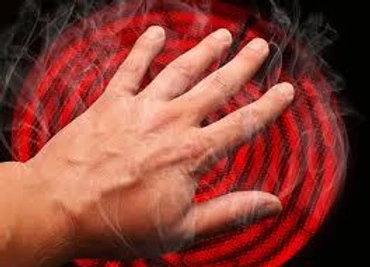Pain as a Protector
September 18, 2019
When muscles feel tight, what exactly does that mean?
Maybe it’s time we stop thinking of pain as simply a bad thing. Pain obviously serves an important evolutionary purpose. Namely, it protects us from injury by alerting us to tissue damage or the potential for tissue damage.
There are some people in the world who don’t have the ability to feel pain. As a result, they are frequently affected by injuries such as burns, cuts, infections, that wouldn’t have happened, or a been as bad, if pain had alerted them to the potential for injury sooner.

Pain is something created by the brain. It does not exist in the tissues. This is true whether you are talking about the pain from being kicked in the shin, or the chronic lower back ache with no radiographic explanation. Pain is a brain output, indicating that, from the input it is receiving, it is interpreting that tissue damage is occurring or is at risk of occurring. But the relevant inputs the brain receives are not simply sensory nerves in the tissues you are feeling pain. They include thoughts, feelings, beliefs, past experiences, mood, vision etc.
This means that, as well as biological factors, pain is influenced by psychological and social factors. You may feel that while this might be true in theory, that your pain is purely biological and psychosocial factors don’t influence your pain. But your pain, too, is influenced by psychosocial factors. It’s part and parcel of being human.

Sometimes this system becomes overly protective, causing us to feel pain when there is no tissue damage, and no risk of tissue damage. This is often the case with people suffering chronic (or long-term) pain. In this situation, we can desensitise the system with education, graduated exercise, and by exploring potential inputs that may be amplifying the pain response. Because all inputs to the brain can potentially effect whether or not pain is felt, how severe the pain is and what type of pain it is, this is a lot of potential inputs that can be explored! While this can appear daunting, it means we have a lot at our disposal to help to reduce your pain.
So while pain is certainly annoying, if we can ascribe intentions to it, it has good intentions. It’s just that sometimes it gets a bit over-protective. But with education, graduated exercise and addressing biological, psychological and social contributing factors, we can get the system back to being appropriately protective.
Need helping getting your long-term pain in order? See our physiotherapist in Aubin Grove today!
-
 What Can Make Neck Pain a Headache?
What Can Make Neck Pain a Headache?
Often people experiencing a headache are also experiencing neck pain/tightness a...
-
 How Physio Can Help Your Headaches
How Physio Can Help Your Headaches
Headaches are no fun. Some people will only experience short-term headaches ever...
-
 Muscle Strains
Muscle Strains
Winter sports are back and with them come more muscle strains, particularly hams...
